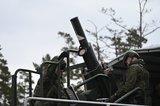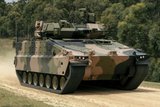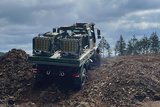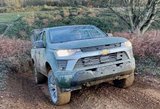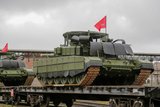Raytheon’s 3rd Generation FLIR system undergoes testing
Raytheon has demonstrated its 3rd Generation Forward Looking Infrared (3rd Gen FLIR) technology for the Improved Target Acquisition System (ITAS) in a series of laboratory and field tests. The tests saw the 3rd Gen FLIR achieve proof of concept, and preliminary evaluation of the impact of firing all versions of the TOW missile was also performed.
ITAS is a target acquisition and fire control system used by the US Army and US Marine Corps early entry forces as a highly mobile, adverse-weather, day/night capability to counter advanced threats. The system increases target detection, acquisition, recognition and engagement ranges; fires all versions of the TOW missile from both the M41 ground launcher (dismount mode) and the M1121 high mobility multipurpose wheeled vehicle (HMMWV) platform; and provides a growth path for future missiles.
This latest 3rd Gen ITAS maintains the same near-and-wide fields of view while adding ultra-narrow and ultra-wide fields of view; and Raytheon's 3rd Gen FLIR combines long-wave and mid-wave infrared and high-definition resolution.
During the test, conducted in the presence of programme office personnel from the US Army's Close Combat Weapons Systems and Army Aviation and Missile Research and Development Engineering Center, the 3rd Gen ITAS FLIR demonstrated improved sensor performance and enhanced situational awareness.
Jeff Miller, vice president of Combat and Sensing Systems for Raytheon Missile Systems, said: ‘Raytheon's FLIR improvement programme provides warfighters with better clarity at all ranges, allowing them to identify targets and differentiate between combatants and non-combatants at greater stand-off ranges.
‘Implementing 3rd Gen ITAS FLIR improvements will continue to give our warfighters in the field an unfair advantage in the fight.’
More from Land Warfare
-
![Strengthening Baltic defence capabilities]()
Strengthening Baltic defence capabilities
How Latvia is bolstering its territorial defences, industrial capacity and international cooperation with Dynamit Nobel Defence’s SKORPION2 Remote Mining System.
-
![Land forces review: British Army vehicle programme stalls and company results land]()
Land forces review: British Army vehicle programme stalls and company results land
In the first monthly review of land forces stories, the Shephard team looks back to evaluate the major news events that have impacted the sector. The UK’s Land Mobility Programme was notable but another setback occurred when a market industry day was scrapped.
-
![Sweden boosts air defence capabilities with Diehl Defence, Saab and MBDA orders]()
Sweden boosts air defence capabilities with Diehl Defence, Saab and MBDA orders
The orders continue the country’s growing investment in its air defence systems across land and sea, coming months after previous investments by the government into IRIS-T SLM equipment.
-
![Russian T-90MS MBT goes for maximum survivability]()
Russian T-90MS MBT goes for maximum survivability
The in-production T-90MS comes with five levels of protection to tackle a wide range of evolving threats on the battlefield.
-
![Barco’s vision to trust: from past to future]()
Barco’s vision to trust: from past to future
Barco’s story is one of constant evolution enabling more immersive, reliable, and future-ready training experiences.










